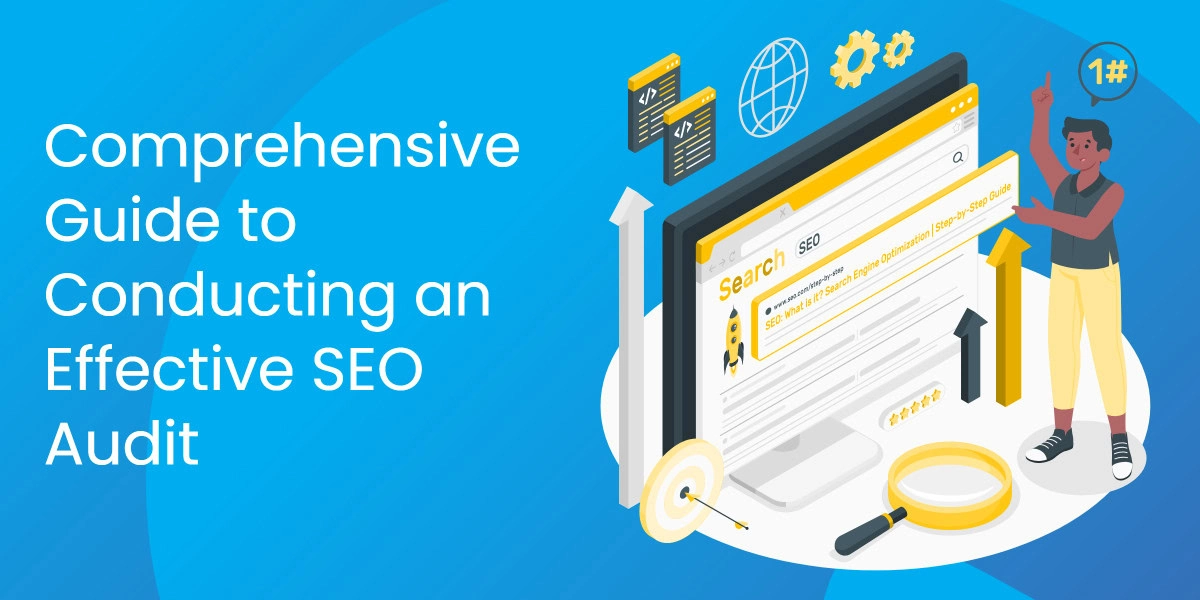In the ever-evolving world of digital marketing, mastering the art of Search Engine Optimization (SEO) is crucial for businesses aiming to enhance their online visibility. A thorough SEO audit is foundational to this process, allowing you to identify areas for improvement and capitalize on new opportunities. In this guide, we’ll walk through the step-by-step process of conducting a comprehensive SEO audit, covering everything from basic setups to technical enhancements. So, whether you’re an SEO novice or a seasoned pro, this guide is designed to provide valuable insights and actionable steps.
SEO Basics: Setting the Foundation Comprehensive SEO Audit
The first step in an SEO audit is ensuring that all the essential tracking and analytics tools are in place. This involves:
- Google Analytics and Bing Webmaster Tools: Ensure these are properly set up to monitor site performance and visitor interactions.
- XML Sitemap and robots.txt: Confirm that your XML sitemap is created and submitted to Google Search Console and that your robots.txt file is correctly configured.
- WordPress Plugins: Tools like RankMath and Google SiteKit can enhance your analytics capabilities, ensuring you’re always connected to the latest site data.

A screenshot of an XML sitemap submission in Google Search Console.
Keyword Research: Finding Your Niche
Keyword research involves identifying strategic keywords to target:
- Focus and Long-Tail Keywords: Choose focus keywords for your main pages and find long-tail variations to improve ranking opportunities.
- Competitor Analysis and Search Intent: Examine competitors to see what drives their traffic. Categorize keywords by intent—navigational, informational, or commercial—and prioritize based on difficulty and search volume.

On-Page Optimization: Enhancing Content
Effective on-page optimization can significantly boost SEO performance:
- Images and Internal Linking: Ensure images are optimized with alt text and establish robust internal linking structures.
- Meta Tags and Schema Markup: Enrich meta descriptions and title tags with focus keywords. Implement schema markup to enhance search visibility.
- Content Structuring: Use headings, subheadings, and short, engaging sentences to make content readable.

Off-Page Optimization: Broadening Your Reach
Off-page optimization strategies include:
- Backlink Analysis and Google Business Profile: Analyze competitor backlinks and ensure your Google Business Profile is complete and accurate.
- Guest Posting and Social Sharing: Look for guest posting opportunities and share content across platforms to generate engagement and links.
Content Strategy: Crafting Compelling Narratives
Quality content is pivotal for driving traffic and conversions:
- Content Refresh and Engagement: Update outdated content and use tools like Frase to create engaging, conversion-optimized content.
- Visual Aids and Readability: Incorporate images to break up text and maintain reader attention with bold statements and concise paragraphs.
Visual Suggestion: Before and after comparison of a piece of content before optimization.
Technical SEO: Ensuring Seamless Performance
Technical SEO ensures your site is healthy and accessible:
- Mobile-Friendliness and Site Speed: Conduct audits to ensure your site is mobile-responsive and loads quickly.
- Indexing and Crawl Errors: Use Google Search Console to identify and fix indexing and crawl errors.
- URL Structure and HTTPS: Ensure URLs are keyword-optimized and the site is secured with HTTPS.
Additional Insights: Evaluating Strength
Finally, assess SEO performance metrics:
- Page Authority and Link Metrics: Evaluate page and domain authority, total links, and referring domains to understand your site’s competitive edge.

By following these structured steps, you can conduct a thorough SEO audit that reveals actionable insights and paves the way for significant improvements in your site’s performance. Remember, SEO is an ongoing process, and regular audits are crucial for maintaining visibility and staying ahead in the digital landscape. Happy auditing!





